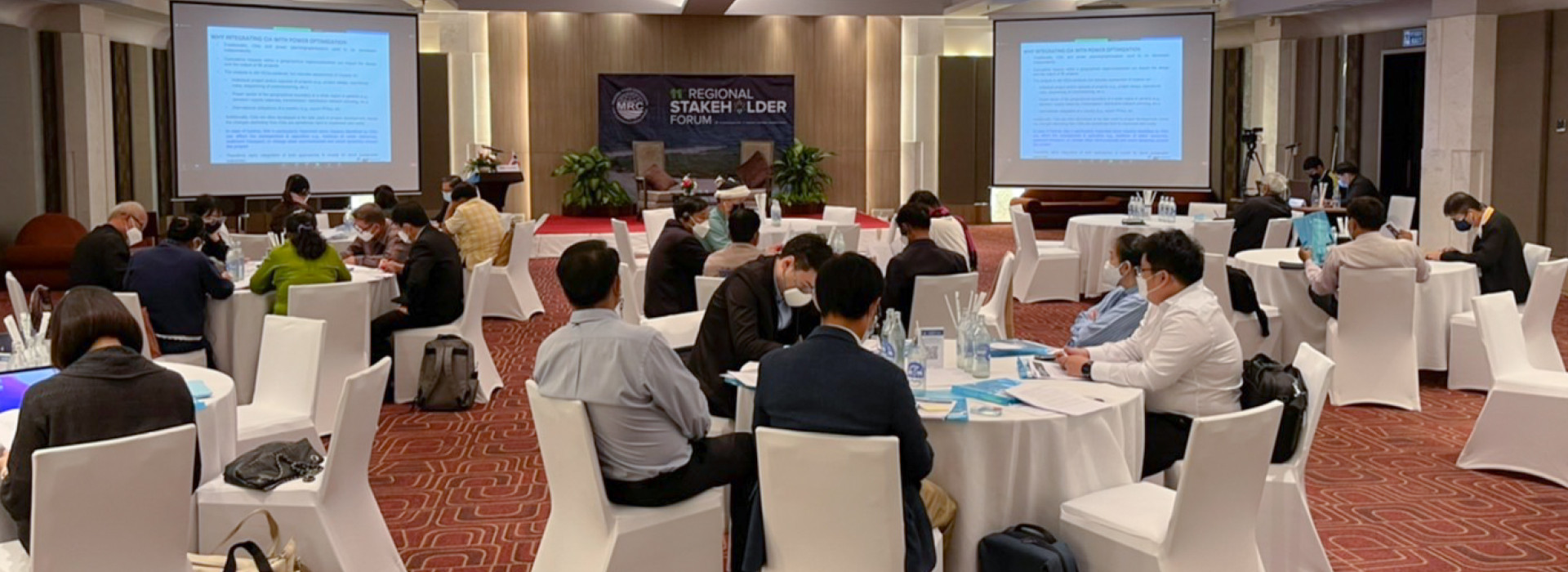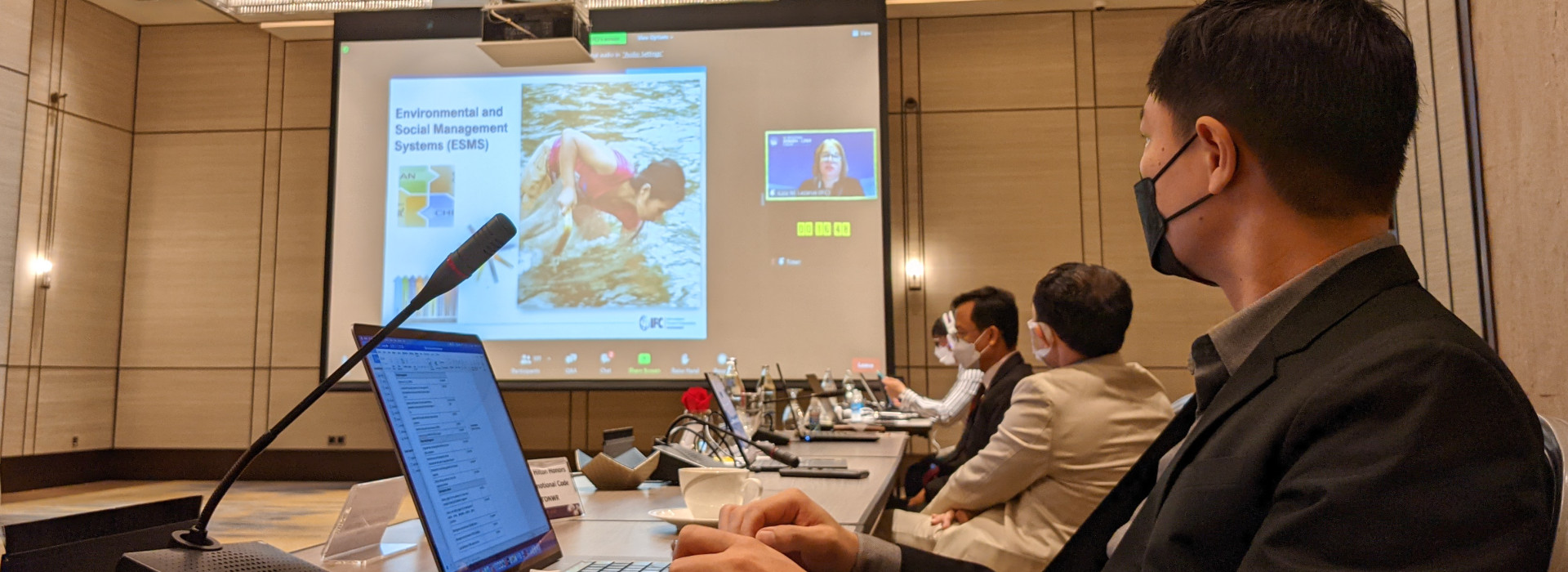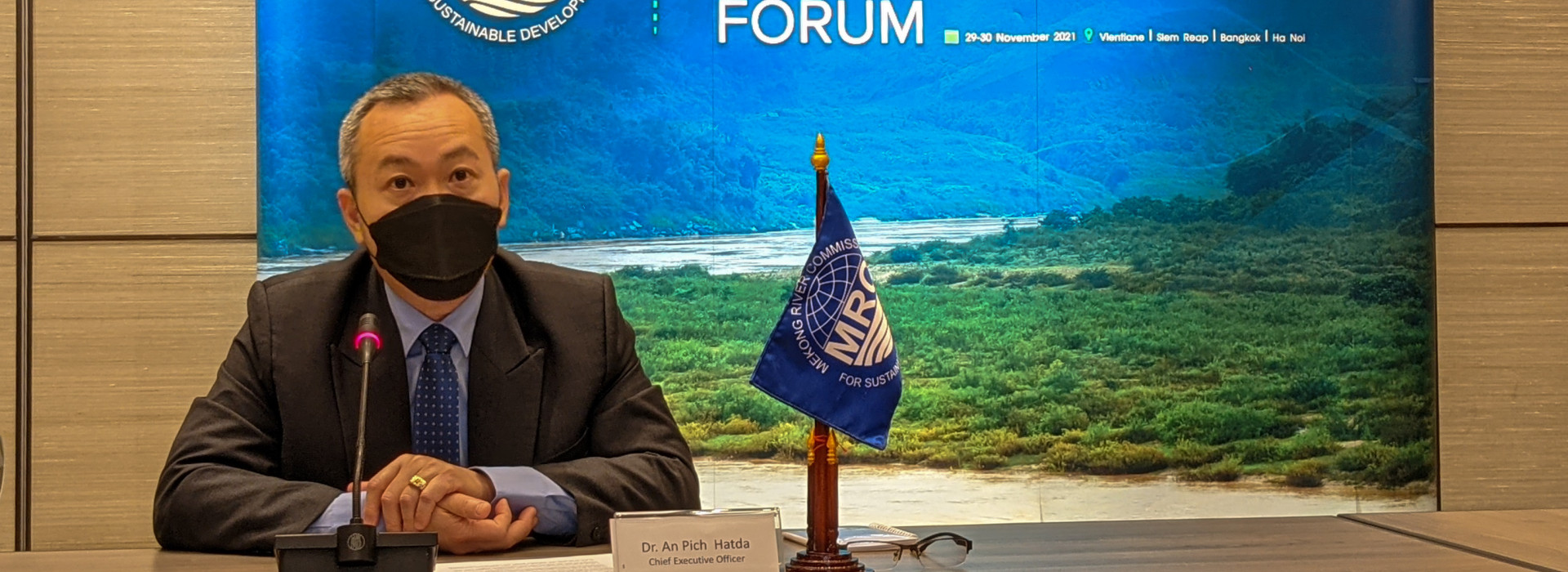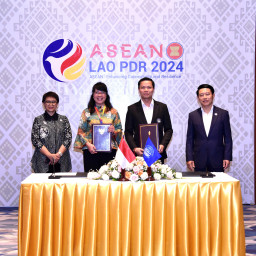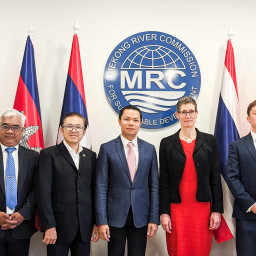11th MRC Regional Stakeholder Forum delivers recommendations for responsible hydropower management, Prior Consultation process
Vientiane, Lao PDR, 8 December 2021 — Mekong governments, developers and operators were urged to share information and data on hydropower operation to improve cascade dam management, according to the first-ever public forum organized on this critical issue by the Mekong River Commission (MRC). Stakeholders also specifically discussed the most recent assessments of potential transboundary impacts from the Sanakham dam Lao PDR had proposed to build on the mainstream of the Mekong River.
The 11th Regional Stakeholder Forum, held on 29 and 30 November 2021, aimed to provide a unique opportunity for stakeholders to exchange views on responsible hydropower development and management and to consult them on the 684-megawatt Sanakham dam. It attracted in excess of 200 attendees each day in a hybrid virtual-physical setting that included government officials, hydropower developers and operators, international and national hydropower associations, community representatives, civil society organizations, and MRC Development Partners and Dialogue Partners.
There are currently 88 hydropower projects in the Lower Mekong Basin (LMB) with around 12,600 MW total installed capacity. Some 15 dams with a total capacity of 1,600 MW are under construction and by 2040, hydropower is forecast to generate more than 30,000 MW in the LMB. During the forum, attendees were briefed on some of the challenges arising from the increasing prevalence of hydropower plants and the regional effort to tackle them.
Lao PDR’s challenges and efforts in coordinating multiple dam developers and operators provided one of the examples. The country recently commissioned the Nam Ou Cascade Control Centre, the first in the nation, to manage internal and external communications to mitigate flood risk. The Control Centre is an information sharing conduit for regional and local authorities and government agencies which will monitor and coordinate hydropower projects over 15 MW.
The US Army Corps of Engineers experience in transboundary river management between the US and Canada shows that the challenges of aging infrastructure, climate change and environmental factors are equally applicable to the LMB. Adopting best practices that include collaborative management between the two countries and their national and local agencies, infrastructure maintenance and community outreach, will improve common basin management outcomes.
Representatives from China provided latest information about hydropower development and management in the Upper Mekong River known in China as Lancang. China’s plans for the Lancang River cascade, a centrally controlled dam operation that includes an automatic hydrological forecasting system, can address environmental and management issues relating to native fish species, water quality and monitoring fish passage.
But with more dams coming online, a representative from a civil society organization called for a stronger and urgent sharing of operational regimes of hydropower projects with the public. “We believe information on flows including release schedule is necessary for the communities living along the Mekong River. Making this data available in simple language is equally important.”
Dr An Pich Hatda, MRC Secretariat CEO, said the MRC has been stepping up efforts through the new 10-year Basin Development Strategy to establish a regional mechanism for coordinated basin operation management.
“We aim to ensure that decisions on flow releases are supported by transparent data and information sharing between countries. We want to ensure that there is improved predictability of flow changes for basin communities.”
Stakeholders assured of their comments on impacts from Sanakham dam
While appreciating the Lao Government for sharing a huge number of assessments and studies about the Sanakham project, stakeholders expressed concerns about its transboundary impacts, recommending an economic and financial analysis of the project together with an assessment of bank erosion and socioeconomic effects.
Attendees notably from Thailand urged Lao and Thai policymakers to increase the number of monitoring stations to assess the impact on downstream Thai communities whom they said are living close to the proposed project. Stakeholders also called on the project developer to ensure dam safety and minimize unforeseen flood emergencies to protect local communities.
Besides conducting technical reviews of the project’s submitted documents, the MRC Secretariat has conducted rapid assessments of the immediate downstream impacts of the dam and recommended a set of measures that would not only minimize the negative impacts but also enhance the project’s benefits.
Commenting on the necessity for collective effort to ensure the project’s success, Mr Sinava Souphanouvong, Vice Minister of Lao Ministry of Energy and Mines, said “Lao government stands ready to work closely with other MRC Member Countries and relevant stakeholders to ensure a meaningful public participation and conclusion of the Sanakham project.”
Stressing the importance of the forum to the Prior Consultation process, Dr Hatda said “These discussions are essential and the forum serves as a venue to gather feedback and concerns to be considered by the MRC Joint Committee before passing them to the developer and the notifying country to address.”
The CEO added stakeholders’ concerns and recommendations, gathered during the official Prior Consultation process, would be formally recorded and reflected in the technical review report of the proposed project, and submitted to the MRC Joint Committee who oversees the Prior Consultation process for consideration.
The Sanakham hydropower project is located on the Mekong mainstream between Xayaburi and Vientiane provinces or approximately 2 km upstream of the Thai-Lao border in Loei province. The project is estimated to cost more than USD 2 billion and will be developed by Datang (Lao) Sanakham Hydropower company, a subsidiary of China’s Datang International Power Generation Co. Ltd.
Note to editors:
The MRC is an intergovernmental organization established in 1995 for regional dialogue and cooperation in the Lower Mekong River Basin. Based on the Mekong Agreement between Cambodia, Lao PDR, Thailand and Viet Nam, the Commission serves as a regional platform for water diplomacy as well as a knowledge hub of water resources management for the sustainable development of the region.
###
